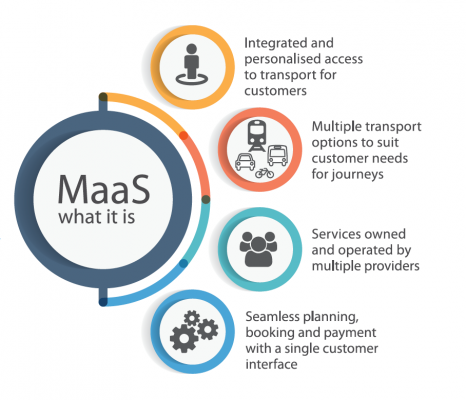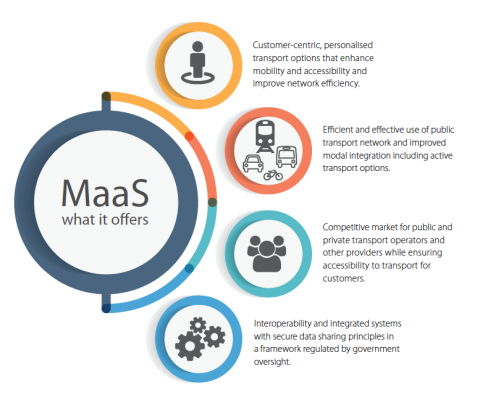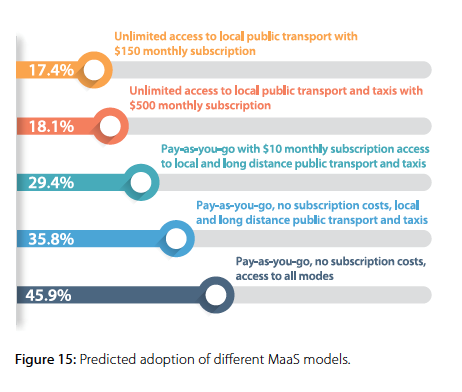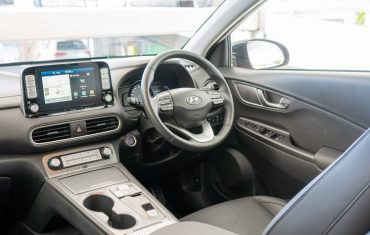
The changing face of mobility in Australia
For your employeesThere’s a worldwide revolution taking place in mobility – the way people choose to get from point A to point B – to Mobility as a Service (MaaS). Be it for work, leisure or pleasure, an increasing range of mobility options are becoming available to us, which will challenge our traditional desires to own a vehicle in certain instances. And, while we hear a lot about what’s happening overseas, what’s the current state of play closer to home?
In taking the temperature of mobility changes in Australia, we consider what’s happening in research and ask: How are we preparing for a changed mobility landscape? How – and when – will governments, private organisations and road users need to adapt?
Source: ITS Australia
According to Susan Harris, CEO of Intelligent Transport Systems Australia (ITS) – a global transport sustainability and technology not-for-profit based in Melbourne – the current state of play in Australia is dynamic and changing at a pronounced speed.
“When we start to talk about MaaS, there’s a whole variety of different solutions that people can jump onto,” explains Susan. “This includes vehicles like micro-scooters, electric scooters and bikes, through to services such as Ola and Uber, as well as car sharing like GoGet and Flexicar, and then you also have your more traditional leasing plans.”
The other significant mobility trend gaining momentum in Australia is driver assistance solutions that improve vehicle safety and take some of the driving load off drivers. As Susan says, “We’ve got a layer of connectivity. We’re just starting to see the first wave of that in Australia.”
Source: ITS Australia
Current research in Australia
In 2018, ITS Australia conducted exhaustive research into our understanding of mobility, MaaS and our “demand”, as Susan describes it, for new modes of transport. The results of that research unearthed some interesting information.
Not surprisingly, there was a divide between regional and metropolitan demands on mobility. In Australia’s outer suburbs, there was a general feeling from respondents that mobility issues weren’t a priority because it’s too far from where they see themselves today; it’s not a viable solution yet.
In the inner cities, the research found mobility was a bigger concern. People living and working closer to state capitals are more accustomed to walking out the front door and hailing a bus, jumping on a tram or booking a cab for a ride.
“They’ve already got access to mobility when and where they need it,” says Susan. “But then there’s a ‘sweet spot’ in this doughnut around the city where people have access to a range of transport modes but they can see, if it was enhanced, it would be that much easier for them. There are also certain regional hubs that could really benefit from supplementing the existing public transport services with some emerging mobility solutions.”
Accordingly, Susan suggests there’s an “appetite” for a transport information hub. “From a travel point of view, there are certain sweet spots that are well-suited to a mobility-level service solution – an app or something like that – something that brings together all of your transport options into one place, with the view of being more convenient than owning a car.”
Source: ITS Australia
The challenges Australia faces
Some of the biggest challenges Australia faces in embracing a greater range of mobility options is uniformity, collaboration and cooperation or – as Susan puts it – “trying to be as nationally harmonised as we can.”
“In some ways, the isolation of our capitals is appealing internationally because we could actually deploy some of these mobility solutions in one capital and provide decent coverage,” she observes. “You don’t have to do [every capital city] at once. But I think we also need to remember that we’re a small nation and we don’t need to do everything seven times.”
“It’s great that each state wants the best for its own community,” she continues. “But, sometimes, the best thing for your community is to have some level of a synchronicity in the approach, so that we can use the one solution no matter where we’re based, something that supports tourists and supports people travelling from one state to another.”
“There’s an opportunity for us all to work collaboratively. While things can be localised where they need to be, there’s also a level of commonality across Australia, and we can try and work towards that, rather than having differences in all areas and aspects.”
Another challenge for Australia is to continue placing safety front of mind. How do we bring advances in safety to the fore and benefit from them today, instead of looking at this technology in the future?
“We’ve got to look at what’s available from a technology point of view that can assist us immediately,” emphasises Susan.
Governments and mobility
When it comes to the role of governments and mobility, Australia finds itself in a fairly unique position. As a relatively small nation, we don’t necessarily have the financial resources to undertake deployments on the kind of scale typically seen in the US and throughout the European Union.
Susan admits, despite this, Australia is well-respected internationally for the work undertaken by the National Transport Commission, and the policy and frameworks for connected and autonomous vehicles. There’s also the spectrum acquisition (5.9 gigahertz) for connected vehicle communication with dedicated use on transport safety applications.
Despite perceptions that we might be lagging behind the rest of the world, Susan points to the range of deployments that are ensuring Australia keeps pace with global trends in mobility.
“Each of the states is starting to deploy driverless shuttles, exposing the community to the technology and helping them to understand it. But there’s a greater role for government to play in supporting the deployment of emerging technology, as well as getting communities familiar with these technologies.”
Susan adds, “By deploying this technology [like driverless shuttles], we’re helping to build a generation of engineers and technicians that are familiar with the way it works, so we can be well-informed about how we manage this technology and how we deploy it.”
In Australia, government focus has largely been on the traffic management tools – how can they get the most out of them? It’s been about looking at the framework and considering how to be supportive of new technologies and provide a suitable framework without delaying things.
Fleet managers and mobility
According to Susan, fleet managers can best prepare for changes in Australia’s mobility landscape by first understanding the marketplace, and then taking some time to familiarise themselves with the range of MaaS solutions already available.
“Broaden your horizons,” she suggests. “Understand there’s a variety of players out there for more flexible lease solutions, ride share, car share and so on. See the range of options out there, and have a mix of solutions available.”
“You don’t have to have one product that provides all the services your fleet needs,” she concludes. “A fleet manager might have a mix of products in their toolkit – for different needs and different mobility options at different times.”
Download a copy of IT Australia’s Mobility as a Service in Australia Report for further information.
 Driving Insights
Driving Insights








